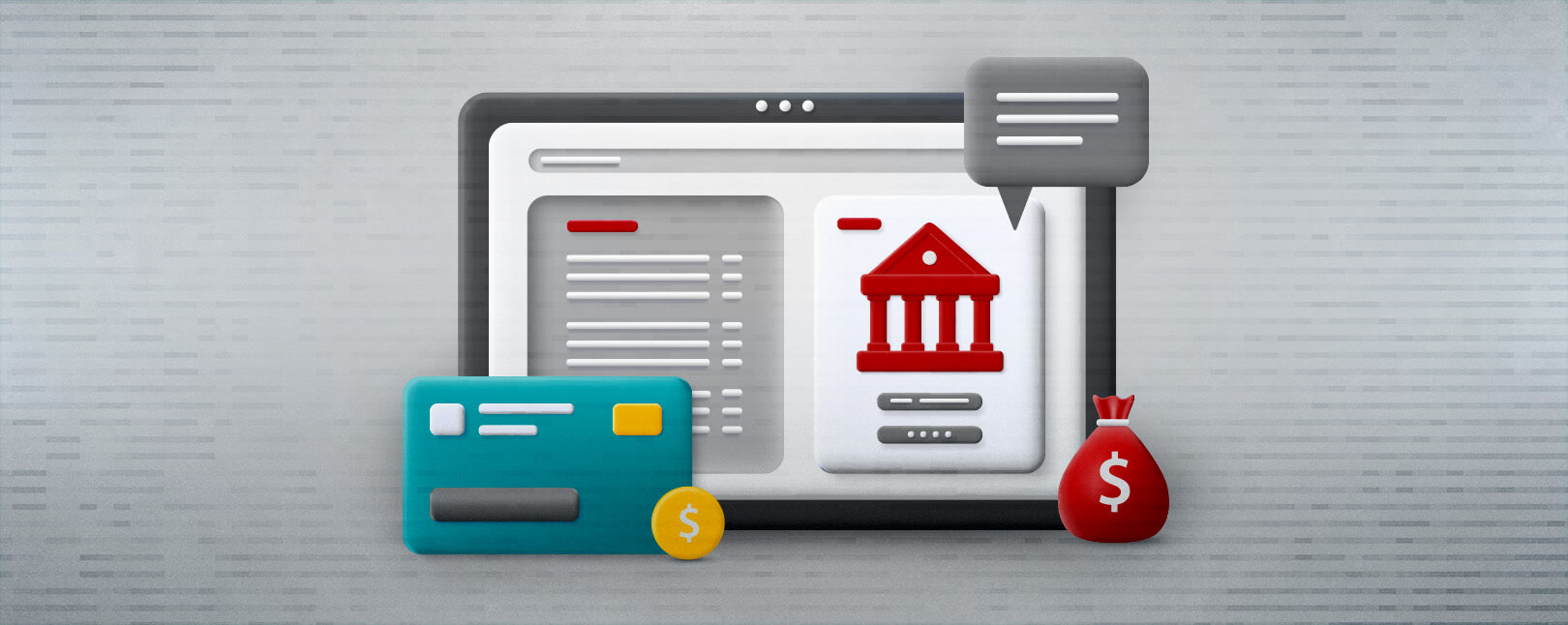How do merchants get paid after a transaction is finalized? It’s a question that a lot of merchants don’t really think about. At least, not until a problem comes up.
You might be aware of the highlights. But, as they say, the devil’s in the details when it comes to payment presentment. For instance, here’s how the US Uniform Commercial Code (UCC) defines presentment:
“Payment Presentment means a demand made by or on behalf of a person entitled to enforce an instrument (i) to pay the instrument made to the drawee or a party obliged to pay the instrument or, in the case of a note or accepted draft payable at a bank, to the bank, or (ii) to accept a draft made to the drawee.”
Sounds like a bunch of gibberish, right? Well, to translate all that into English, a payment presentment occurs when one party requests or demands payment from another. Now, let’s delve into how that actually works.
Recommended reading
What is Payment Presentment?
- Payment Presentment
Payment presentment is the act of formally presenting a request for payment to a bank. After presentment, the funds can then be withdrawn from the account held by the drawee—typically a credit or debit cardholder—and transferred to the merchant.
[noun]/* pā • mənt • pre • z(ə)nt • mənt/
A third party behaves as a guarantor or responsible body in charge of a payment process. That party accepts presentment transactions on the first party’s behalf.
Presentment rules dictate how, when, and why merchants may process a payment request. They also outline how that process will be communicated to the acquirer for approval and finalization. Presentment also governs how and when merchants may render online payments, subscriptions, and more, through electronic bill presentment (EBPP).
UCC rules govern all commercial processes in the US. This is true whether accepting checks or making an online payment agreement, and includes cash sales, credit card transactions, and acceptable payment presentment methods. This extremely dense codex of rules and regulations also lays out payment presentment rules for individuals, banks, and merchants involved in a given transaction.
We understand this can be confusing. So, let’s start by breaking down these complex banking terms into a more digestible form.
Payment Presentment Terminology
Looking at the Uniform Commercial Code, we see a lot of unfamiliar terms with hard-to-interpret meanings. These include:
There are other specific terms involved, as defined by the UCC. However, we’re going to try keeping this as simple as possible. So, let’s skip those details for now.
What Qualifies as Presentment?
Now that we have a general understanding of the terms involved in presentment for payments, let’s look at them in action.
“Presentment may be made at the place of payment of the instrument and must be made at the place of payment if the instrument is payable at a bank in the United States; may be made by any commercially reasonable means, including an oral, written, or electronic communication; is effective when the demand for payment or acceptance is received by the person to whom presentment is made; and is effective if made to any one of two or more makers, acceptors, drawees, or other payors.“
What does that mean? Well, the first thing to note is that payment presentment is, at its core, a legal agreement. The process of presentment for payments is typically conducted between four primary parties:
- The buyer
- The merchant
- The acquirer
- The issuer
To qualify as payment presentment, a transaction must be initiated in the United States through any commercial means. It could be written (i.e. traditional mail order), oral (brick-and-mortar), or electronic (eCommerce). It becomes effective when a transaction is initiated and the receiving party requests payment.
To illustrate, suppose a customer purchased clothing from a brick-and-mortar retailer and paid with a debit card. In that case, presentment rules apply when the merchant begins the process of trying to receive the funds from that sale.
How Does Presentment Work?
“Upon demand of the person to whom presentment is made, the person making presentment must (i) exhibit the instrument, (ii) give reasonable identification and, if presentment is made on behalf of another person, reasonable evidence of authority to do so, and (iii) sign a receipt on the instrument for any payment made or surrender the instrument if full payment is made.
The party to whom presentment is made may treat presentment as occurring on the next business day after the day of presentment if the party to whom presentment is made has established a cut-off hour not earlier than 2 p.m. for the receipt and processing of instruments presented for payment or acceptance and presentment is made after the cut-off hour.“
Presentment almost always describes the process of a merchant seeking remuneration from a sales agreement or payment transaction from their acquiring bank. In other words, the merchant “presents“ a signed check or transaction receipt (instrument) to their bank to gain access to the funds exchanged during the original transaction.
Once the presentment has been approved, the bank may render payment back to the merchant who requested said funds in 1-3 business days from the original transaction date. If done the next day, this may happen no earlier than 2pm per transaction standard time.
Suppose a third party initiated the transaction on behalf of the purchaser. In that case, the instrument (check or another alternative payment method) must be signed over to the third party by the purchaser, and the instrument surrendered to the drawer (processor or financial institution).
Rejecting Presentment for Payment
“Without dishonoring the instrument, the party to whom presentment is made may (i) return the instrument for lack of a necessary indorsement, or (ii) refuse payment or acceptance for failure of the presentment to comply with the terms of the instrument, an agreement of the parties, or other applicable law or rule.“
A payment receiver (bank or processor) may reject a payment if the check/receipt/etc. is damaged or missing, if it lacks a necessary signature, or if the buyer can’t be verified. A presentment attempt can also be rejected if it fails to comply with an instrument’s terms and conditions. Additionally, rejection is possible if an agreement has been breached by either party, or other applicable rules are laws have been violated.
Examples of issues that might cause a presentment to be rejected include:
AVS and CVV fail to match records
Lack of customer signature
Missing merchant credentials
Account has been flagged for fraud
If the receiver rejects a presentment for payment, it could be the result of incorrectly entered details or another form of merchant error. In these instances, the acquirer may have predetermined rules for submitting the presentment a second time. However, merchants should approach this action with caution.
Many acts of fraud depend on the merchant’s failure to identify red flags. It’s in their best interest to implement necessary fraud detection and prevention tools to ensure a smooth transaction and presentment process.
Is a Presentment Final?
Not necessarily. Receivers can reverse charges presented to them resulting from credit or debit purchases. This is a process known as a chargeback.
If a chargeback happens, the party who provided the first presentment can try to present the payment again, along with additional information and documents. This second presentment is commonly referred to as representment. The merchant literally tries to “re-present” the transaction details to the bank for final determination.
During representment, merchants must provide documentation from the original transaction, including any compelling evidence that the transaction was legitimate and should be upheld. Regardless, chargebacks are costly and time-consuming for merchants, and there is no guarantee that the merchant will win the chargeback through the representment process.
With representment, the odds are generally against merchants. The reasons for this are complicated, but they essentially boils down to two significant factors:
- Banks tend to err on the side of their cardholders in a dispute
- Merchants fail to engage in active and effective chargeback management
What is Late Presentment?
Presentment occurs when the merchant submits transactions to the bank for finalization. They only have a limited time frame to do this, though.
Presentment needs to occur quickly so that processing and customer account billing happens promptly. This is because the bank authorized the transaction based on the cardholder’s status when authorization was requested. The cardholder’s account status might change if too much time passes between authorization and presentment.
The buyer may no longer have the funds by the time the merchant finally submits the transaction. There’s a good chance the cardholder won’t remember the transaction at all. This could lead to a customer dispute.
Late presentment chargebacks are a consequence of waiting too long to batch transactions. In this case, the chargeback is filed directly by the cardholder’s issuing bank to reclaim the missing batch amount. Merchants can avoid these chargebacks by simply submitting presentment for payment in a timely manner.
Get the Most out of Presentment
You’re probably reading this article because you’re experiencing hiccups during the presentment stage of a transaction. Or, maybe your business is on the receiving end of a few too many chargebacks, and you’re trying to figure out why. Whatever the case may be, help is just around the corner.
As an industry leader for over a decade, Chargebacks911® is uniquely placed to walk merchants through the presentment process, from the initial transaction stage through dispute resolution. We provide advanced analytics and KPIs that help you craft a winning chargeback prevention and remediation strategy and also help you determine which practices that could be complicating your presentment processes. Contact us today for a free ROI analysis.















